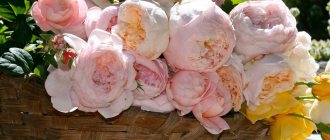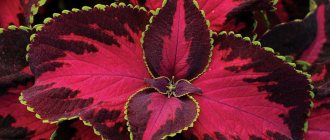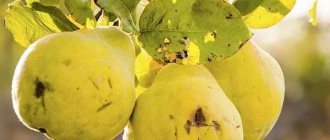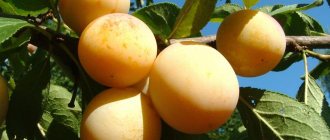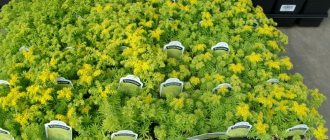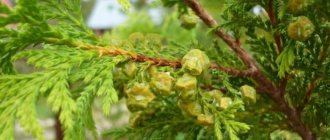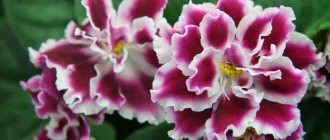Sedum is an unpretentious plant belonging to the Crassulaceae family. Refers to succulents. Sedum is also known as sedum, squeaky, young and hare cabbage.
There are about 500 varieties of flowers, among them low-growing herbaceous plants predominate, and less often shrubs. The most common are perennials. The height of the plant can reach 60 cm.
Description
The leaf blades are thick and dense. They have no petioles. In most cases they are oblong with a serrated edge, but there are other shapes: needle-shaped, round, oval. Their surface can be either smooth or pubescent.
The leaf arrangement can be alternate, opposite or whorled. The color palette of leaves is varied: light green, dark green, yellow, bluish, reddish-violet are found.
The upper leaves are more rounded, the lower ones are pointed and wedge-shaped. The stems are fleshy and strong. Inflorescences located on short shoots are usually umbellate, corymbose or racemose, less often growing singly or in axils.
Sedum flowers are small, star-shaped, and smell pleasant. The colors are yellow, pink, orange, white, crimson, purple. Sedum is a honey plant. The rhizome is shortened, there are many lateral roots.
Reproduction
At home and when grown outdoors, you can easily get new sedum bushes, since they reproduce very easily and take root quickly.
Sedum
There are several ways to propagate sedum:
- propagation by seeds
- cuttings (variety – winter cuttings)
- rhizome division
Let's consider each method of obtaining new copies in more detail, identifying all the positive and negative aspects.
Seed propagation
For sowing, you can use your own seeds collected from plants in the flowerbed. You can buy planting material in the store. Bright sunlight and prolonged exposure to the open sun lead to a change in the color of the leaf plates.
It does not lose its decorative effect; on the contrary, it acquires an attractive reddish tint. Seeds can be sown in spring or autumn. It is necessary to pour a soil mixture consisting of sand and peat into the containers.
Sedums have small seeds, therefore, to distribute them evenly over the surface of the earth, you need to mix them with dry river sand
It is worth considering that only freshly harvested seeds have good germination, so when purchasing it is important to pay attention to the expiration date. The earlier the seeds were collected, the greater the likelihood that they will germinate 100%.
Seeds are sown superficially and not covered with soil. It is advisable to moisten the soil before sowing. So that later during moistening you do not bury the seeds into the soil. The container must be covered with film or glass.
Under natural growing conditions, seeds undergo natural stratification - they lie under snow all winter and are exposed to sub-zero temperatures. Domestic seeds need to create the same conditions. The container with the sown seeds can be placed in the refrigerator for 2 weeks or taken outside and buried in a snowdrift.
Under natural conditions, sedums can be found in unusual places, that is, where their growth seems impossible. And the seeds of the plant or cuttings of sedum are brought into such hard-to-reach places by birds or mice.
Sedum ground cover
After passing the stratification, the container with the seeds is brought into the house and placed on a well-lit windowsill with a room temperature of at least +18 °C. After about half a month, the first shoots appear. The germination process can take a whole month.
The shoots are so friendly that the entire surface becomes covered with a continuous carpet. When two true leaves develop on young specimens, the young plants must be planted in separate pots and given plenty of space for good development.
Cuttings
Flower growers note that propagating sedum by cuttings means saving a lot of time and nerves, since this method is the simplest and most effective . Survival rate is almost 100%. In order for the sedum to take new roots, it only needs to come into contact with the ground.
As cuttings, parts of the stem of various lengths are broken off or leaves are taken for propagation. By the way, they also take root well.
After the cutting is torn from the mother plant, it is necessary for it to lie on the table at room temperature for several hours so that the cut dries out a little.
The cuttings are only slightly buried in the soil. Watering should be rare. When the plant develops its root system, it will begin to massively grow foliage.
Interesting compositions can be created from decorative variegated varieties of sedum
Young plants are ready for transplanting into open ground after 2 weeks from the formation of the root system . Further growing in containers does not make sense, since the plants will begin to stretch and the stem will become bare and unattractive.
Decorative composition
Winter cuttings are used by gardeners to massively increase the collection, that is, to fill large areas with sedum. Designers for landscaping recommend using sedum . When it fades, you cannot wait for frost; you should cut off all the shoots and spread them out in an even layer in a fairly warm room.
While the plants are “basking in the warmth,” they will first lose all their foliage and the stems will remain leafless. After some time, young shoots begin to form in place of the fallen leaves.
Now you need to wait until these shoots reach a length of 6 cm. They need to be broken off and buried in the soil for rooting. Cuttings root well at room temperature. They are not afraid of increases and decreases in temperature. The only thing that sedum cuttings are afraid of is being in damp soil for a long time at a low room temperature. In such conditions, cuttings may rot.
Rhizome division
In addition to seed propagation and cuttings, some varieties are propagated by dividing the rhizome
These include:
- sedum prominent
- common sedum
- red dotted sedum
When the plant grows widely, it can be divided and planted in different places, filling the free space with them . To do this, in early spring you will need to remove the mother plant from the ground, shake off the soil and divide the bushes so that each section has its own growing points and buds.
Red-spotted sedum
The places where the root system is cut or divided are sprinkled with activated or charcoal , and can be treated with special fungicides. Now, before planting the cuttings in a new place, it is recommended to keep them in a cool room for several hours so that the sections dry out a little.
Spreading
Sedum is found in many parts of our planet, but most often grows in the countries of the Northern Hemisphere: Russia, Mongolia, Japan, China, USA, Mexico. Prefers mountainous terrain, tolerates arid climates and temperature changes well, and does not like humidity.
In addition to rocky slopes, sedum settles in pine forests, dry fields, meadows, forest edges, and peat bogs. The plant needs plenty of sunlight.
Selecting a location
Sedum flowering
Sedum comes from warm countries, so for growing you need to choose a well-lit area , without any shading. If you plant sedum in partial shade, this fact will not affect the growth and development of the plant, but you will have to wait a little longer with flowering, and it will not be so lush.
Low-growing sedums are not recommended to be planted next to deciduous plants, otherwise fallen leaves will hide their beauty.
Soil composition
There is an established opinion that sedums will grow on any soil, even sandy soil, you just need to add a little humus to it.
However, in fertile soil, sedums show themselves in all their glory.
Sedums do not like dampness; excessive soil moisture can lead to rotting of the root system.
Sedum, or hare cabbage, as it is popularly called, naturally grows mainly on sandy or rocky soil. Due to the fact that the plant is not demanding on growing conditions, many varieties can be used to create incredible compositions in the shape of animals.
Without compromising growth and flowering, sedums can grow in the same place for 5 years . The overgrown curtain will need to be rejuvenated, divided into several parts and transplanted to another place. Add fresh soil, crushed stone and sand to the remaining specimen.
Fertilizer application
When planting in a new place, add ash and sand to the soil. For good growth and development, plants need fertilizing with mineral and organic fertilizers.
Decorative sedums require 2-fold fertilizing throughout the entire growing season.
The first is held in April, the second in August. It is better to feed with special fertilizers for succulents. When preparing the solution, it is necessary to adhere to half the concentration.
Perennial sedums are fed with nitrogen-containing fertilizers only at the beginning of vegetative growth - in the spring . Applying nitrogen in the fall is strictly prohibited, as it can impair sensitivity to low temperatures.
Many gardeners use caustic sedum to control weeds. In addition, traditional healers prefer caustic sedum to all other medicines in the fight against warts.
The beauty and fleshiness of the leaves, as well as their richness, depends on whether the plants receive enough nutrients
At the beginning of the growing season, as was said, they are fed with organic fertilizers. For this purpose, infused mullein is used. When preparing the solution, mullein is diluted with water in a ratio of 1:10. Sedum does not like fresh manure.
Transfer
It is better to replant plants in the spring . Humus and mineral fertilizers are added to the soil for planting, I dig it with a shovel and level the surface with a rake. Sedum can be planted in rows. It is advisable to leave 10-15 cm between specimens, and 20 cm between rows. This distance will allow the plant to grow well.
The transplant should be completed with abundant watering. Weekly care consists of loosening the soil, timely watering and weeding the soil from weeds.
Sedums have fleshy leaves that store water “in reserve”
However, prolonged overdrying of the earthen coma can lead to the death of the plant. Abundant watering should be carried out in dry times, when hot, sunny weather lasts for a long period.
Excessive waterlogging has a detrimental effect on sedums, as the plant can be damaged by fungal diseases.
Pruning sedums
The procedure is simply necessary, since the plants grow very quickly, the stems can become bare and the cluster takes on an unkempt, sloppy appearance. Therefore, in relation to sedum, it is necessary to carry out formative, sanitary and rejuvenating pruning. Haircut should be regular. When inspecting the plant, it is necessary to remove all damaged and weakened shoots.
Perennial varieties resistant to frosty winters are pruned in late autumn. The optimal time is a strong cold snap. During this period, all stems are cut to the ground level with the soil. The remaining stumps are covered with covering material or the soil near the plant is mulched. With the arrival of spring, many young stems form on the bushes.
Pruning helps maintain the decorative shape of the bush and rejuvenates the plantings
Decorative pruning is carried out to give the plant a compact appearance. All manipulations are performed carefully, using sharp and disinfected instruments.
If you find plain leaves on an ornamental variety with variegated foliage, you will need to cut them off completely.
Plant name
Translated from Latin, the name of the flower means “to pacify” and “to sit.” The first option is due to the fact that the plant has an analgesic effect. The second translation option is due to the fact that the sedum is very low and often grows, spreading over the surface, as if sitting.
The Russian name “sedum” is also associated with its healing effect - people valued it as a cleansing agent.
Sedum in indoor floriculture
Growing sedum at home is even easier than growing it outdoors. It is only important to choose the right varieties.
For planting, you need to select shallow containers
Soil composition for successful cultivation:
- turf soil - 2 parts
- peat – 1 part
- rotted leaves - 1 part
- river sand – 1 part
Expanded clay or pebbles must be placed in each pot, because without drainage the root system of the plant can rot. Before planting, the soil needs to be moistened, but the entire soil should not be allowed to be too wet.
Hanging succulents
The planted plant should not be disturbed at first. Watering is carried out only after the top layer of soil has completely dried 1 cm deep. After planting, young specimens are kept in partial shade. Thus, they quickly adapt to new conditions, recover from stress and begin to develop. Then the pot with the plant is placed on the windowsill so that its beautiful fleshy foliage is bathed in the sun and receives warm baths.
Fleshy, rich foliage indicates that the plant has enough mineral and organic fertilizers
Sedum loves fresh air, so it is recommended to regularly ventilate the room, but avoid drafts . In the summer, a pot with a plant can be taken out to a loggia, balcony, terrace, or placed in a semi-shaded place in the garden. It is recommended to replant adult specimens once every 2 years.
Useful properties of sedum
The alkaloids contained in sedum have a sedative and analgesic effect, stop bleeding and lower blood pressure.
The plant contains citric, oxalic, ascorbic and malic acids, which promote hematopoiesis and strengthen the immune system. They normalize metabolic processes and remove toxins from the body.
Flavonoids have a positive effect on the cardiovascular system.
Tannins contained in sedum provide anti-inflammatory and healing effects, and also help in the functioning of the gastrointestinal tract.
Saponins accelerate healing and have a diuretic effect. The plant tones the body, eliminates inflammation, helps in the treatment of bronchitis, ulcers, scurvy, atherosclerosis, skin rashes, fever, anemia, burns and nervous system disorders. Reduces blood cholesterol levels.
Basically, the aerial part of the sedum is used for medicinal purposes - infusions and decoctions are made from it, but sometimes the rhizome of the flower is also used - it is used in the treatment of skin diseases, healing wounds and abrasions. Juice is extracted from the leaves
Varieties of sedum
There are many varieties of sedum, including short, medium and tall. Let's look at photos of the most unusual sedums:
- Sedum Prominent. Plant grows up to 50 cm with pink or purple flowers. The flowering period is in autumn.
- Sedum Iceberg. Its white inflorescences have a diameter of 15 cm.
- Sedum Rubrotinctum. Also known as Red-colored. The length of the shoots is 20-30 cm.
- Sedum Kamchatsky. Distributed in the Far East
- Sedum six-row. Low, has erect shoots from 5 to 15 cm in height.
- Sedum Thickbranched. It has small flat rounded leaves. Forms a hemisphere.
- Sedum Morgana. Sedum with long grayish-greenish hanging vines, at the ends of which there are bright pink or red flowers.
- Sedum Purpureum. Creeping, height about 15 cm.
- Sedum Ruby Glow. The owner of rich, bright flowers and tall stems.



